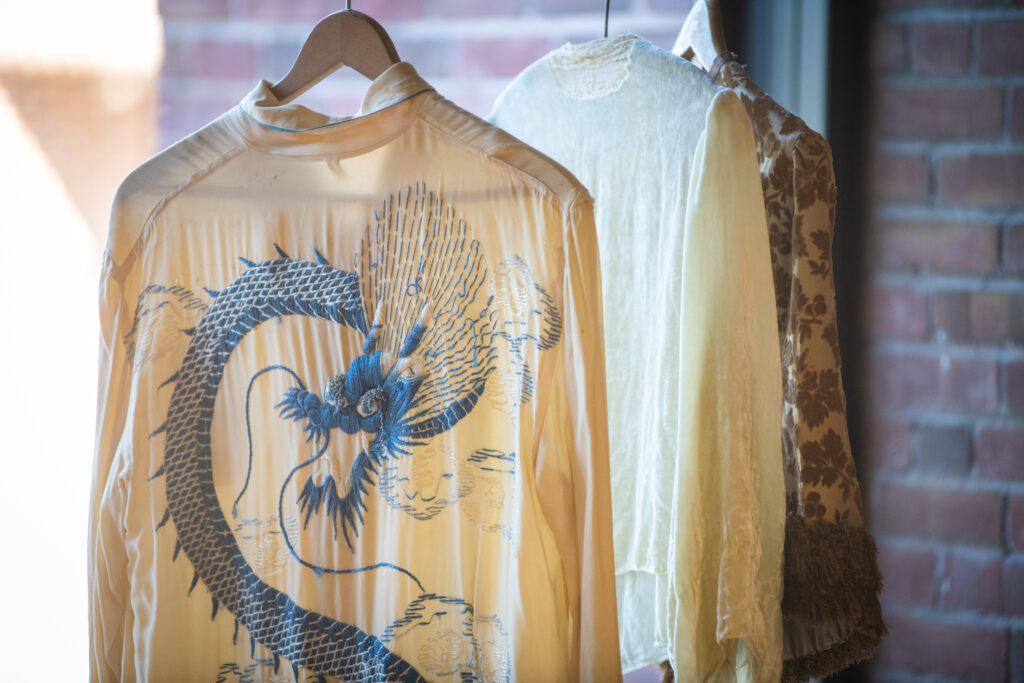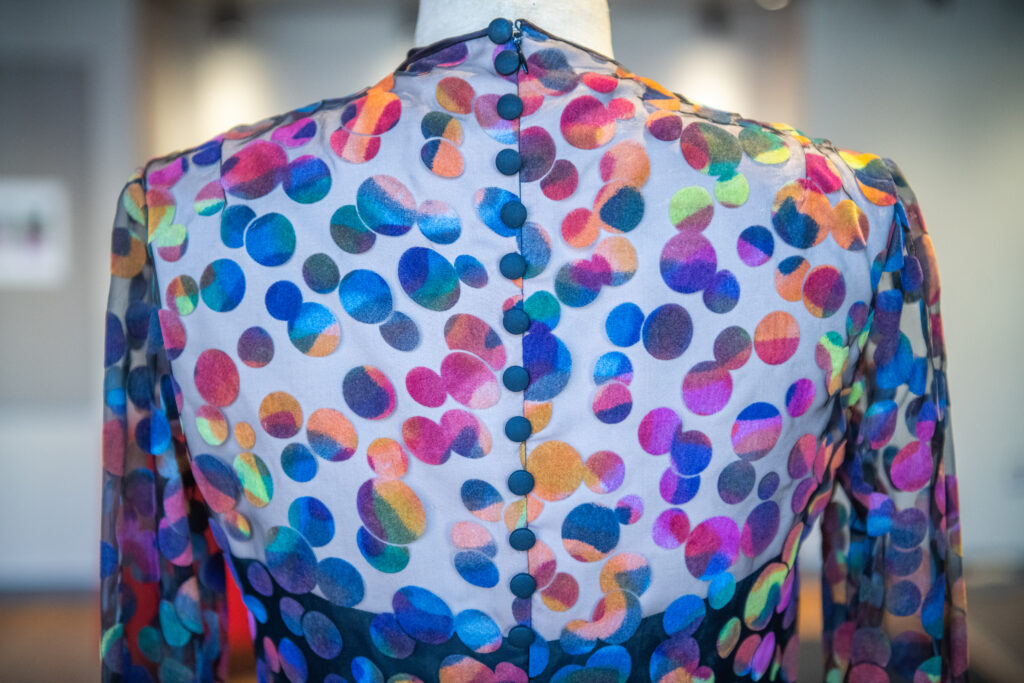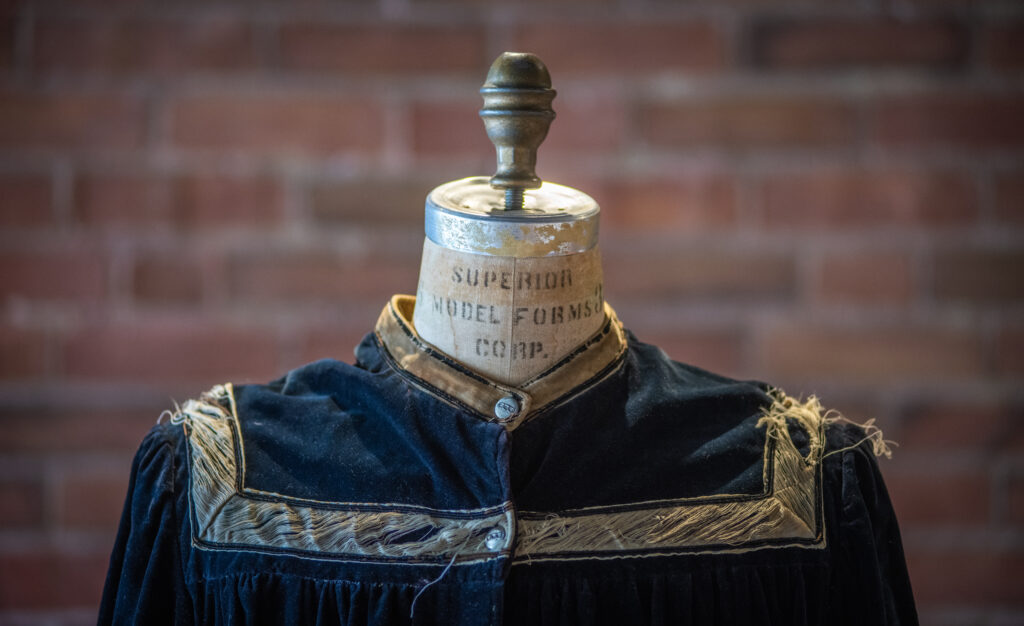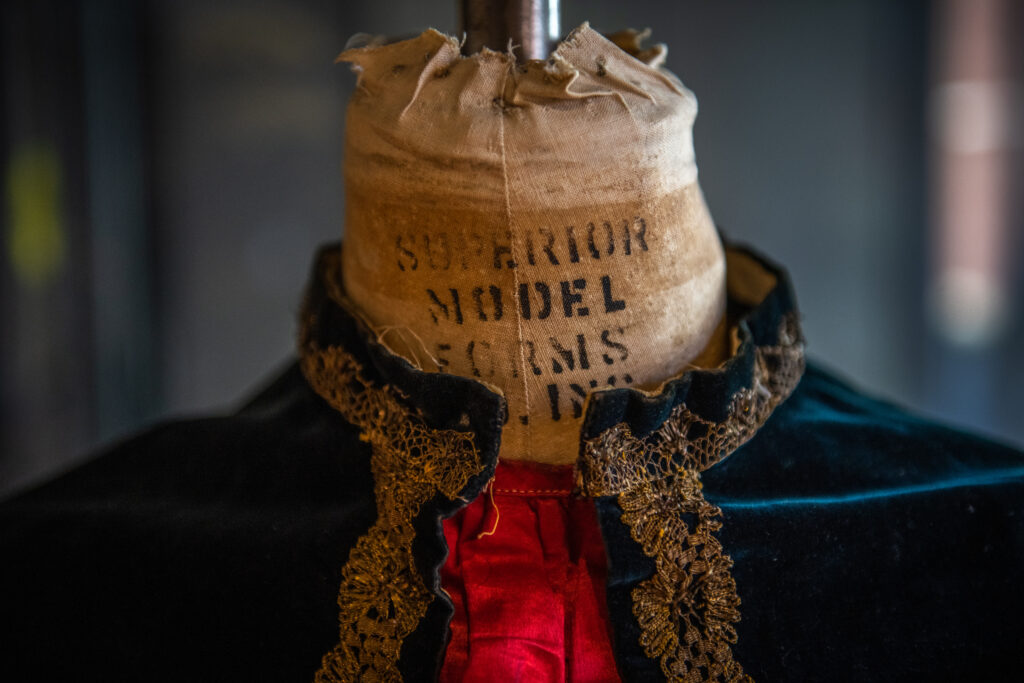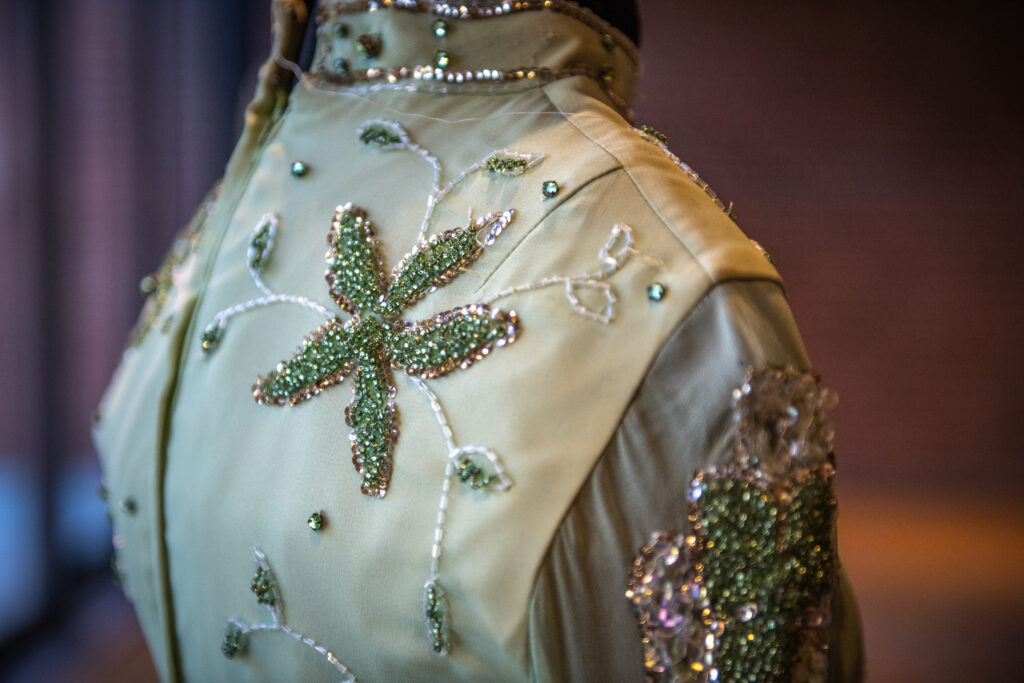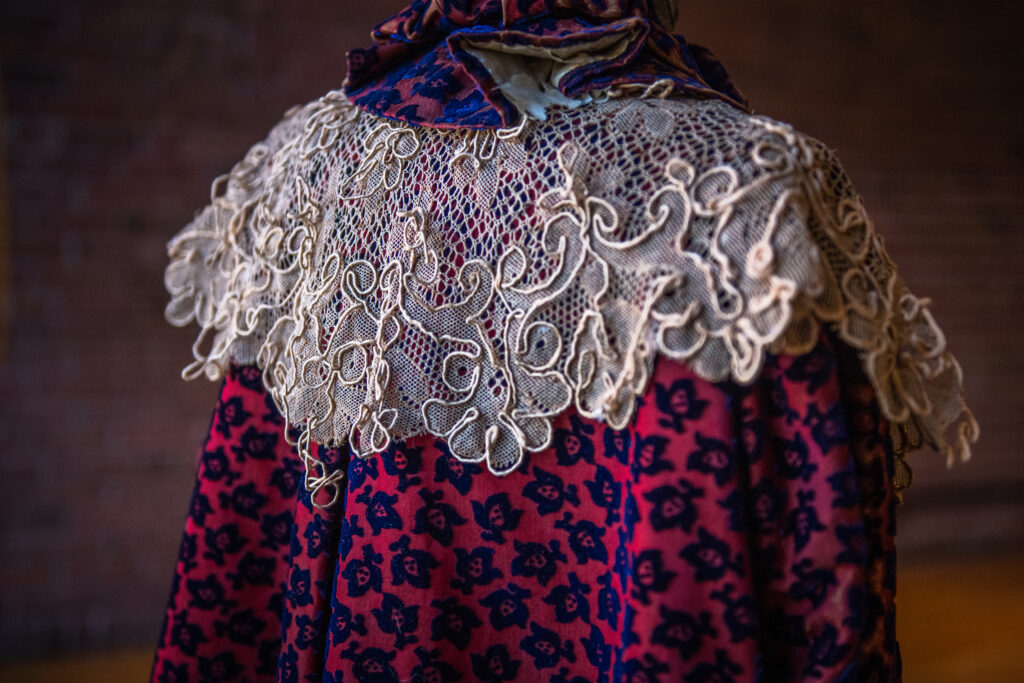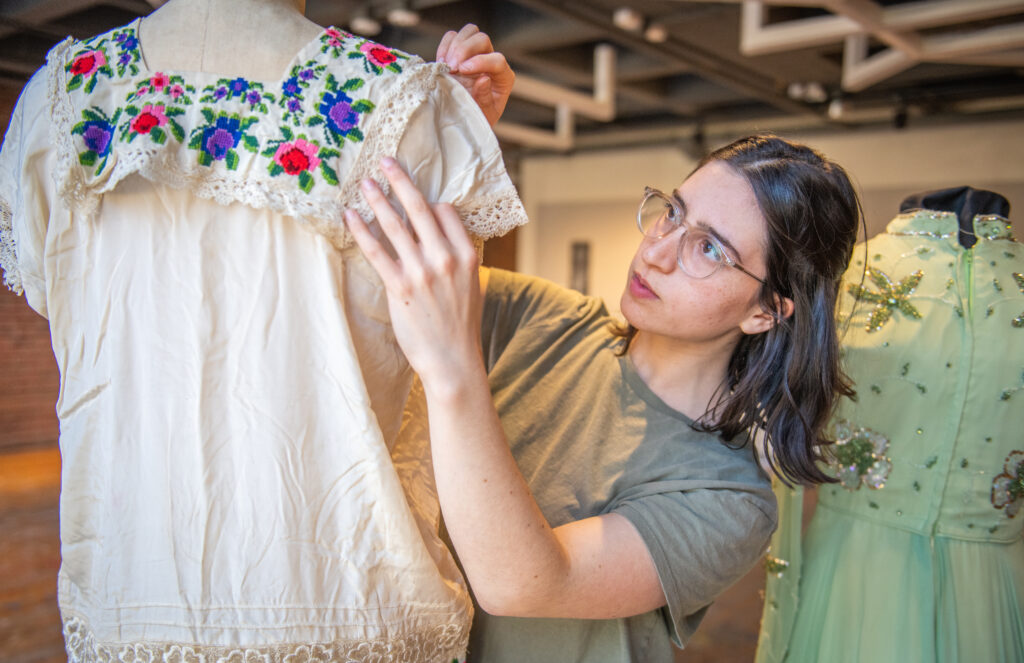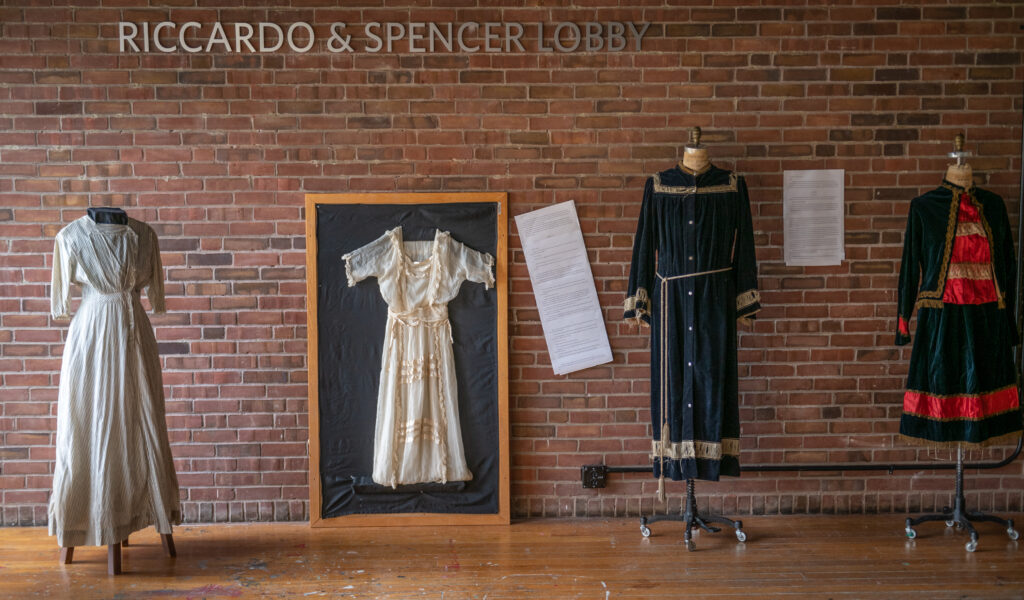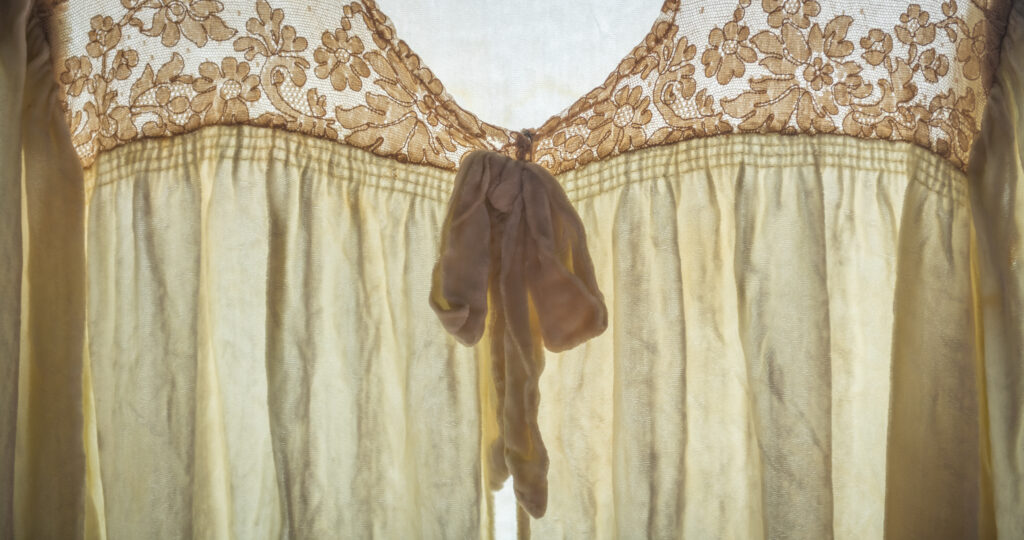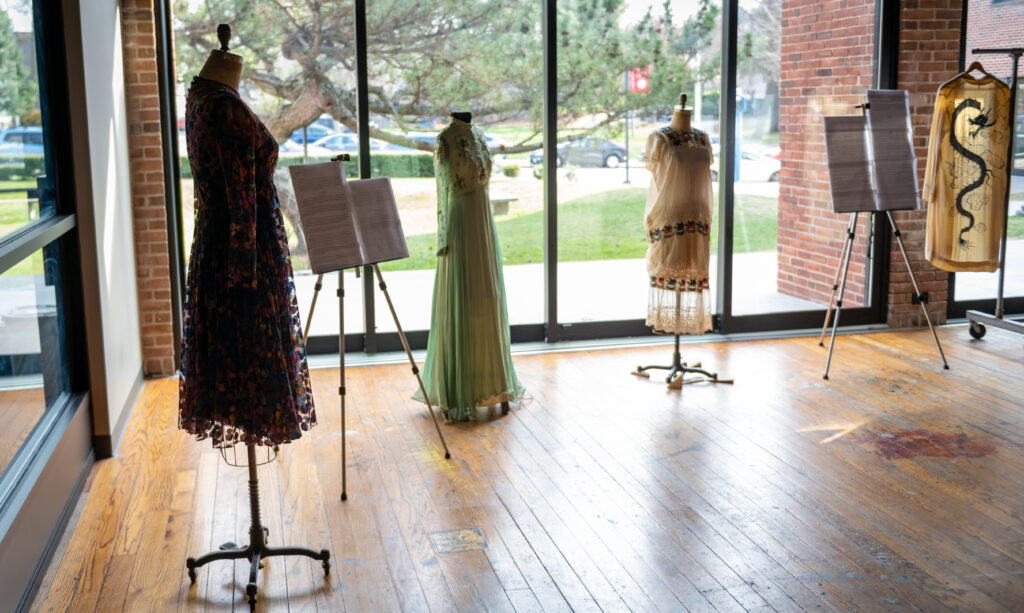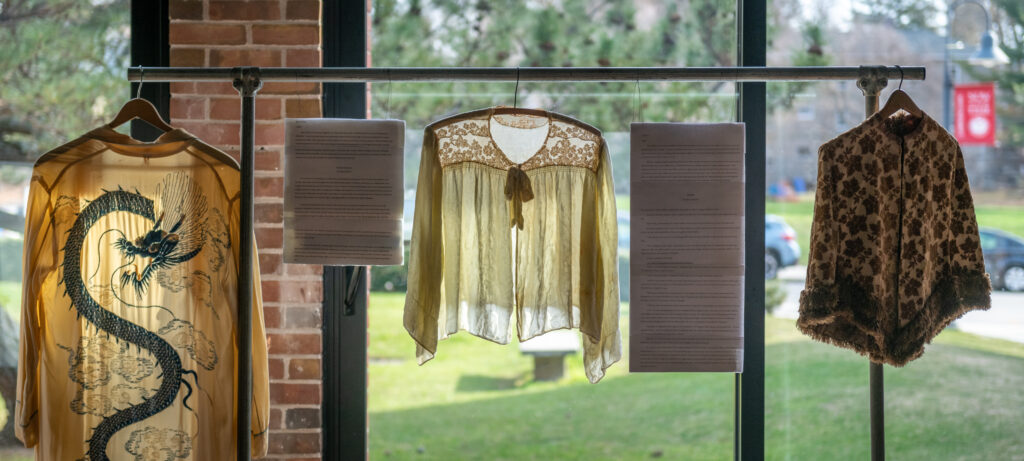Senior project adds text to textiles
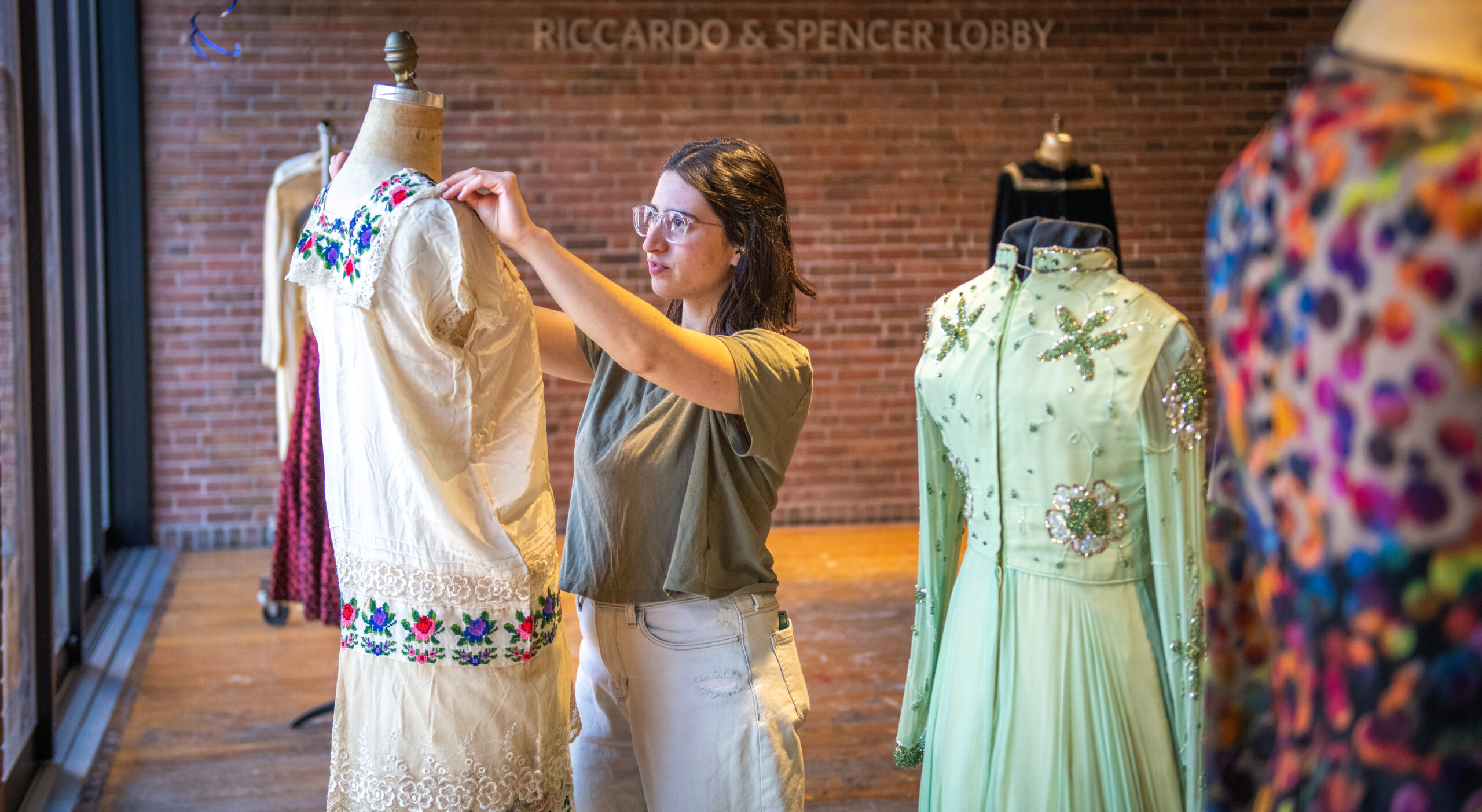
Maia Snyder ’23, M.A ’24, arranges a historic fashion exhibit on campus.
Maia Snyder ’23, M.A. ’24, became fascinated by an ever-growing stock of vintage garments while working in the Visual and Performing Arts Department’s costume shop. Items that once graced Clark stages eventually became too delicate for further wear, reaching the end of their life in a bin marked “Do not use.”
“I was hoping they could be seen and appreciated at least one more time,” says Snyder, who has given 15 garments new life in a historical fashion exhibit. The pieces, which date from the 1880s to the 1970s, are on display in the Little Center lobby.
The project is vastly different from Snyder’s academic studies. She’s an international development and social change major pursuing an accelerated degree in community development and planning. A passion for theatre and storytelling made the costume shop feel like home and inspired Snyder to pursue a directed study to organize the exhibit. Theatre arts Professor Jessie Darrell-Jarbadan guided Snyder, who researched each garment.
Some of the styles were completely foreign to Snyder, requiring a Google image search to research them. As she began to identify the garments’ origins, Snyder consulted books, catalogs, and academic articles to understand the significance and historical context of each piece.
“I’ve always loved crafting and creating,” says Snyder. “Costuming is a fun storytelling exercise because you design costumes based on characters, putting yourself in their shoes.”
To augment the exhibit, Snyder collaborated with students taking a creative writing course with English Professor Mandy Gutmann-Gonzalez who used Snyder’s research to craft characters and a story to suit each garment.
Neomi Efrat ’26 wrote about a Sukajan robe, a style that emerged in post-World War II occupied Japan. She says the assignment expanded her perception of what serves as inspiration.
“My garment inspired me to write outside of my comfort zone,” Efrat says. “I wanted to examine topics like war and orientalism through a depiction of psychological projection and, inevitably, love.”
Efrat’s story depicts a woman initially overcome by stress after receiving the robe as a gift.
Other garments in the exhibit include:
- A party dress circa the 1960s
- Terno de lujo, the traditional garment of Yucatan, Mexico, which dates to the 1920s
- A bed jacket, meant to be worn as lingerie, from the 1930s
- A 1920s opera coat
- A 1920s cloche hat
- A lingerie dress or “tea gown” from 1915
- A 1910s wash dress
- An 1880s afternoon dress, a representation of daily wear for upper-class young women
- An 1880s capelet, worn by a wealthier woman over a tighter fitting bodice popular in that era
- A Vivandière costume made in the 1930s
- A day dress from the early 1880s
“Once she had a moment to gather her genuine feelings, though, it was certain the bright blue embroidery stunned her — it bulged out of the smooth white fabric in the most elegant way a thing could bulge out of another thing. Now that she thinks of it, her first thought might have actually been that she wished she could become flea sized and live in that robe for the rest of her life, exploring the hills and valleys of the wonderful array of threads.”
“Marrying the clothing articles and the stories gave the clothes the historical lore they deserve,” says Finnegan Wertz ’23, M.S. ’24, who wrote about the Freemason robe. “The robe is too tattered and fragile to be worn anymore, so it almost felt like I was eulogizing it in my story.”
“In the anteroom, the Conductor’s fists released the velvet folds of his ceremonial gown. The chain slipped from his shoulder and fell to the floorboards with a heavy thud. He smoothed the fabric of the Conductor’s robe, reminding himself of his new duties.”
Looking at intricate beading on a light green cocktail dress from the late 1960s, Snyder imagined that it must have been fun to wear.
“The skirt moves really well,” Snyder says, grazing the flowing fabric. “This is handmade, but it was created when mass production was becoming more prevalent. Though it’s beautiful, it’s not like someone put a lot of love into the piece.”
The project highlighted the role clothing plays in developing an identity. Faith Field ’26 was immediately drawn to the 1895 bold red bodice, and created the character Hattie, who wears it to an afternoon tea party.
“The wives of husbands who worked with trains and steel looked down on me with revulsion. Their eyes sparkled with humor as I showed up to their walks and tea parties in mere cotton and replication beads … Well, maybe I should quit complaining. Ida said that my red cotton dress today suited me well. She even asked for the seamstress’s name, that she’d been looking for someone good with embroidery.”
“Saturated red cotton and intricate, shiny black beading along her sleeves and collar — what a statement. Maia and I concluded that this woman wanted to be seen,” says Field. “I could almost feel that desire to be noticed, the need to prove herself as if it was pouring out from the seams.”
Maia Snyder’s exhibit is on display through April 23 in the Little Center lobby.

